Nearly 60 Years of Life With a Muscled-Up 1962 Ford Falcon Wagon
With mild upgrades, this family hauler became a part of a family legacy
05/10/2024

Photography by David Conwill
ClassicsWith mild upgrades, this family hauler became a part of a family legacy

Maybe you rummaged around in a drawer and found your grandfather’s ancient cereal-box decoder ring. Or maybe it was a cardboard box in your attic, where you rediscovered your very first GI Joe, the 12-inch variety. The simple things that serve as gateways to a lifetime of flooding, happy memories. And they don’t necessarily have to be toys and trinkets. As a case study we direct your attention to this 1962 Ford Falcon two-door station wagon. It’s been in the same North Carolina family for close to 60 years now, a period crammed with good feelings, from giving it a wash outside the carport to heading for the coastline with the whole brood piled in back.
That’s why this Falcon wagon is still in the Cannon family, which plucked it off a used-car lot in Charlotte and not just maintained it, but also made it a measurably better car. How so? By having a new engine built around a larger, 200-cu.in. inline-six block that used the top end of the Falcon’s original engine. In Cannon family history, the Falcon only lasted five years as a daily driver, but it was an unassailable part of that heritage by then. It’s been maintained carefully in a mostly pleasant climate. The Falcon retains its original paint today, along with its original pasted-on pinstripes. It’s been upgraded, cosmetically, with fender skirts and a set of later-model wheel covers for its 13-inch wheels. And it’s still driven, mainly to shows. You see, in the Cannon family, the patriarch is a diehard Falcon fan.
“It’s a base car, with factory paint, an NOS interior and headliner, and the bottom end of a 200 engine,” said Jeff Cannon, who now preens the Falcon from his home in Granite Quarry, North Carolina. “We bought it in June 1965, and it was our daily driver until 1970, when my father got a Ford Crown Victoria. It was my first car in 1983 when I got my driver’s license.”
We can learn two things from this quote: The Cannon family is strongly pro-Ford, except for the fact that Jeff briefly owned a Chevrolet in a dispute with his father over the proper care and use of the Falcon. And that when it comes to Falcons, it’s Jeff’s father, Wayne Cannon, who has the final say, very much befitting a car guy who just turned 84. Make no mistake: The Falcon’s at Jeff’s house but Wayne, from Kannapolis, North Carolina, is the reason it’s there in the first place.
“In 1965, I was driving a 1951 Chevrolet and a 1950 four-door Plymouth, and I decided to get rid of the Plymouth and get another vehicle,” recalls Wayne. “I was living in Charlotte, and I found this wagon sitting on a used car lot. I purchased it and sold the Plymouth at a Ford dealer. The car had belonged to a guy who was a truck driver and it had 30,000 miles on it, so it was a local car.
Photo by David Conwill
Aside from the aftermarket chrome rocker cover, there are few clues that the Falcon's original 170-cu.in. short block has been swapped for a 200-cu.in. version.


“We were a family then, so I needed a family vehicle, plus the Falcon was a nice-looking car that caught my eye,” continues Wayne. “I bought it for $950 with $300 down. I still have the documents for that. I had never owned a station wagon before. Other than the wife taking the kids to the beach, that’s about as far as we drove it once we moved to Kannapolis. We’d make a big pallet in the back with blankets, put the kids back there, lower the back window and it wasn’t a problem until you stopped, and exhaust fumes started coming in through the back window.”
Today, the car’s a star–it’s been featured in the catalog of Falcon components from Dennis Carpenter Ford Restoration Parts, located just down U.S. 29 from Kannapolis. But it didn’t start out that way. In 1962, Ford produced 396,129 copies of the first-generation Falcon in the third year of the model’s production, with no breakout available as to trim and body styles. In 1962, the Falcon was offered with two sizes of Ford’s third-generation OHV inline six-cylinder engine, displacing 144 and 170 cubic inches, respectively, with a maximum of 101 horsepower.
“I’m not mechanically inclined, and I started having some kind of trouble with the engine,” Wayne says. “So, I took it to a mechanic, and he said that whatever was wrong with it, he’d have to rebuild the bottom part. That was in 1970. He said I could get a 200, and he put that in there and used the top part of the 170 that was in there at first. I have no idea where he got the 200, and I have a copy of the work order, but now, there’s a lot of difference in the horsepower.”
How much? The 200 was first introduced in 1963, in time to be installed in the first-generation Ford Mustang, with slightly bigger bore and stroke measurements than its 170-inch sibling. An impressively robust engine, its cast crankshaft ran in seven main bearings beginning in 1965. The Cannons’ engine has never been on a dyno, but as produced by Dearborn, was rated at 120 horsepower when new. Today, the bigger six has no trouble motivating the Falcon through its Ford-O-Matic automatic transmission.
“I’m pretty happy with it,” Wayne says.
Over the years, Wayne gradually became a Falcon fan, and passed the wagon on to Jeff to drive. As Jeff reminisced, “I got my license and drove the car for maybe six months. A 21-year-old station wagon was not a cool car for a teenager at that time, plus parents didn’t like a guy picking up their daughter in a station wagon. One day, after about six months, a hubcap fell off and I didn’t know it. And Dad said, you’re not driving that car anymore because of that hubcap, so I went out and bought a 1969 Camaro.”
The disagreement emerged because at that time, the Falcon was still decidedly Mom and Dad’s car at their home. Wayne unfailingly washed the Falcon every week, waxed it on schedule, and generally kept it spiffy even as the base interior materials started to deteriorate. In 1996, Jeff and Wayne obtained a supply of NOS vinyl materials and fully restored the interior, adding a new headliner at the same time, with Jeff saying that the interior’s condition remains “perfect” today. The work was done at George’s Trim Shop in Kannapolis. The interior door panels remain original, the knobs were replaced with Dennis Carpenter pieces about two years ago, and a set of engine gauges now reside beneath the dashboard. Under the hood, the 200 boasts a chrome rocker cover, also from Dennis Carpenter.
Wayne still has the original Falcon hubcaps from 1962, which he replaced with units from a 1962 Falcon Futura that he grabbed once he became a Falcon enthusiast in earnest. “The pinstripes are actually tape,” Wayne explained. “I found the skirts from a person in Winston-Salem who messed in Falcon parts, and I bought them from him. I was trying to find accessories that would fit on the car. I put the little chrome half-moons, we call them, on the headlamps.”
“Dad was in the Navy, and he’s always been very particular about the cleanliness of things, so there wasn’t a lot for me to do with the car,” Jeff said. “Later on, Dad had a big building constructed out back, and he stored the Falcon in there for a number of years. Then he brought it out, had it on the road a few more years, and then it went back into storage for another 10 or 12 years. It still has original paint thanks to Dad’s great care.”
Cars like this get noticed, especially once the owner turns into something of an authority of the marque. Time passed, and Wayne kept acquiring early Falcons. One of them was a 1962 Ford Ranchero that, according to Wayne, “went to pot.” Next came a 1961 Falcon that went to Wayne’s brother-in-law, who crammed in a 289-cu.in. V-8 much more than the little bird had stock. Wayne bought that car back, but it eventually experienced an engine failure. Undaunted, Wayne then got a 1963 Falcon Futura hardtop, which he personally restored, and which has been a show winner in North Carolina for years. So, it’s no surprise that Wayne headed to the huge AACA AutoFair show at Charlotte Motor Speedway.
“The wagon was just a car that I liked to start with, but in 1999, I took the car to AutoFair and accumulated some old car parts,” Wayne said. “When I came back, there was a little sticker on the windshield. Someone who represented the Falcon club put it there, so I joined the club. It’s the Carolina Chapter of the Falcon Club of America, which is now based in Lincolnton. I was the chapter president for seven years.”
Fast forward a couple of decades, and the Falcon, still riding on impossible-to-find 13-inch whitewalls, was back at the speedway, where Jeff and Wayne had taken to showing the Falcons together. “The AutoFair officials came by and started looking at Dad’s ’63, which was in contention for Best Restoration by Owner. Then they started talking about the wagon. So, they ended up giving the wagon the Most Original Unrestored for the meet, because they couldn’t award two cars from the same club.
“The wagon is excellent to drive,” Jeff beamed. “We had the carburetor rebuilt last year and it starts right up, runs like a top. It has manual steering, which is why there’s a knob on the wheel.”
“When I get in the wagon and mash the gas, the 200 is faster than my ’63,” Wayne said. “Plus, it’s bulletproof.”

Photo by David Conwill
“My Mom drove us back and forth to school, and I think of her hands on the steering wheel. And Dad drove us around for several years, using the knob on the wheel. Sitting in the carport, there’s a couple of little dings on it from things hitting it when my brother and I were playing outside. We used it for going to the beach; going to ball practice; diving into the back through the tailgate. It has an ahooga horn that the guys thought was nerdy, but the girls liked it. It just has a lot of memories for me. The thing Dad’s most proud of is the exhaust tips that came off a 1940s Cadillac. It doesn’t have dual exhausts. We keep the other tip painted inside.” - Jeff Cannon

Photo by David Conwill
During the muscle car era of the 1960s and early 1970s manufacturers came up with some clever ideas to enhance their vehicles. Horsepower was king, but the stylistic solutions employed to separate the base models from their bigger cubic-inch performance-oriented models on the salesroom floor came to life in design departments. Those designs were then pushed by advertising agencies. Much of that differentiation employed the use of bright colors, stripes, wheels, and scoops. Arguably one of the most creative companies was Chrysler, with their Plymouth and Dodge line of performance cars. While some of the solutions employed were purely visual, others had a practical performance application baked into their design. We’re going to focus on one of Chrysler’s most iconic fresh air scoops, the Shaker, which was available on Plymouth ‘Cuda and Dodge Challenger R/T models in 1970 and 1971. If your E-body had option code N96 stamped on the data plate, or noted on the vehicle’s broadcast sheet, then it was equipped with what was initially called in some early sales brochures as the “Incredible Quivering Exposed Cold Air Grabber” before being changed later on to just “Shaker.”
For the individual that has one of these Shaker packages installed on their vehicle and is looking to do a full restoration on the various components utilized, there are different paths that can be taken. Some may opt for a simple sand and respray, while those looking to do a concours level restoration where the initial factory build process is replicated requires much more effort to pull off. As we focus on the complete makeover of the most visible component, the Shaker bubble, we turn to one of the premier shops that has mastered this technique, Mike Mancini’s American Muscle Car Restorations (AMCR), to show us how they tackle this complex process. Over the years they’ve done numerous OE Gold Certified restorations on Shaker-equipped cars, which has given them a wealth of information. Their approach has been to collect and document the information that has been gathered from a broad range of original vehicles to duplicate that initial build process. We will look at the steps in their process, but before we dive in, we’re going to give you some information on how these parts were manufactured for Chrysler because there is a direct correlation on how they are correctly restored.

Photo: Chrysler Corporation/Stellantis
The first misconception that some individuals have on items like this is that they were fabricated or assembled in house by Chrysler. The reality is that the Shaker fresh air package was farmed out to Fram in Chatham, Ontario for final assembly. As shown in the parts manual, the illustration shows the complexity of the entire assembly which Fram was responsible for delivering to the Hamtramck and Los Angeles assembly plants. The parts that made up this package were sourced from several vendors. Fram in Stratford, Ontario, a subsidiary of the parent company, was responsible for the fabrication of the various base plates, which were designed to be mounted on a variety of different engine and carburetion options, and an outer adapter ring. They also manufactured the various air cleaner lids, filters, and the air doors fitted to the bubble, however, the rest of the parts were sourced from several US and Canadian suppliers. These assemblies, when shipped to both plants, were turnkey - right down to the emblems, ready to be installed. They were shipped on bedsteads that held sixty units each.

Photo: Chrysler Corporation/Stellantis
Chrysler’s early promotional material for the 1970 Barracuda line, which included a Hemi-equipped 'Cuda on the cover of the sales brochure showed the Rallye Red bubble prominently featured. In 1971, the sales brochure had a 340-equipped 'Cuda on the cover with a black Shaker bubble. During the two-year production of Shakers only the black, silver, and red finishes were approved by Chrysler and showed up in internal Fram literature. Part of the overall assembly process required them to paint the bubbles and the first batch sprayed in 1970 were done in Argent Silver. This was a task that Fram was not equipped to perform due to the requirements needed to spray the textured paint, and the adhesion problems encountered because of the bubble’s material composition. Chrysler executives also asked for a few bubbles to be painted Rallye Red for use in their print materials and television ads, and there were very few installed and sold on cars early in the production run. It is rumored that Chrysler opted to discontinue the Rallye Red option because of sun glare issues due to the bubble’s curvature.
Photo: Chrysler Corporation/Stellantis
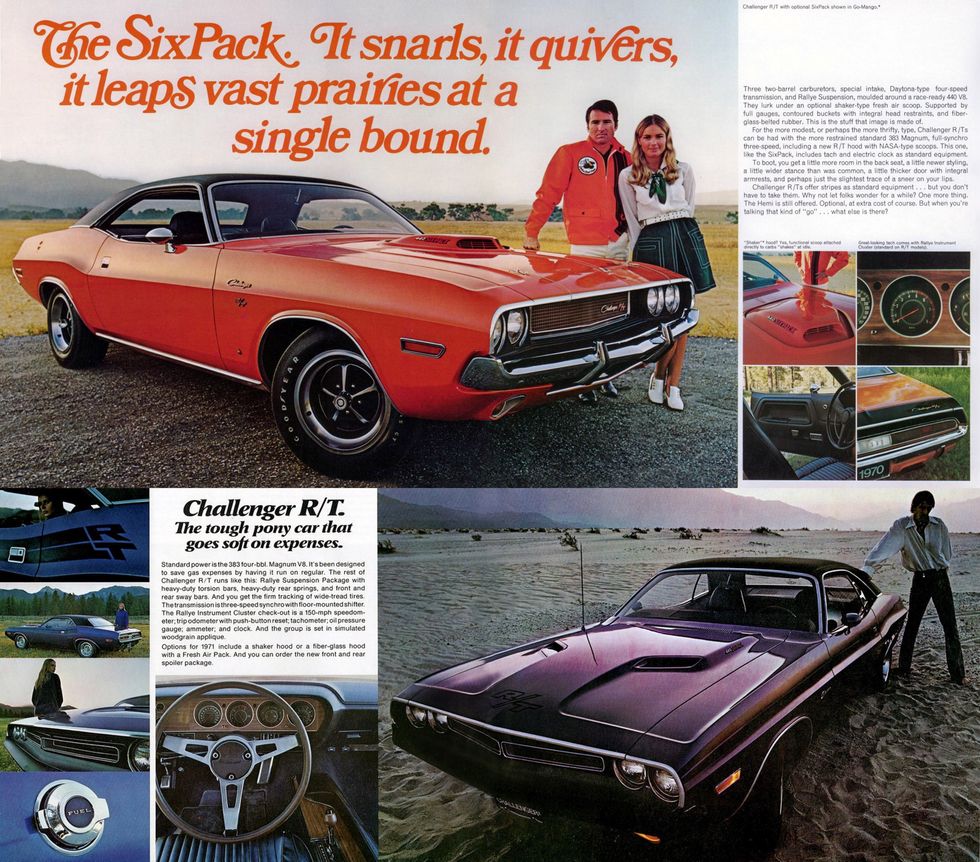

Photo: John Machaqueiro



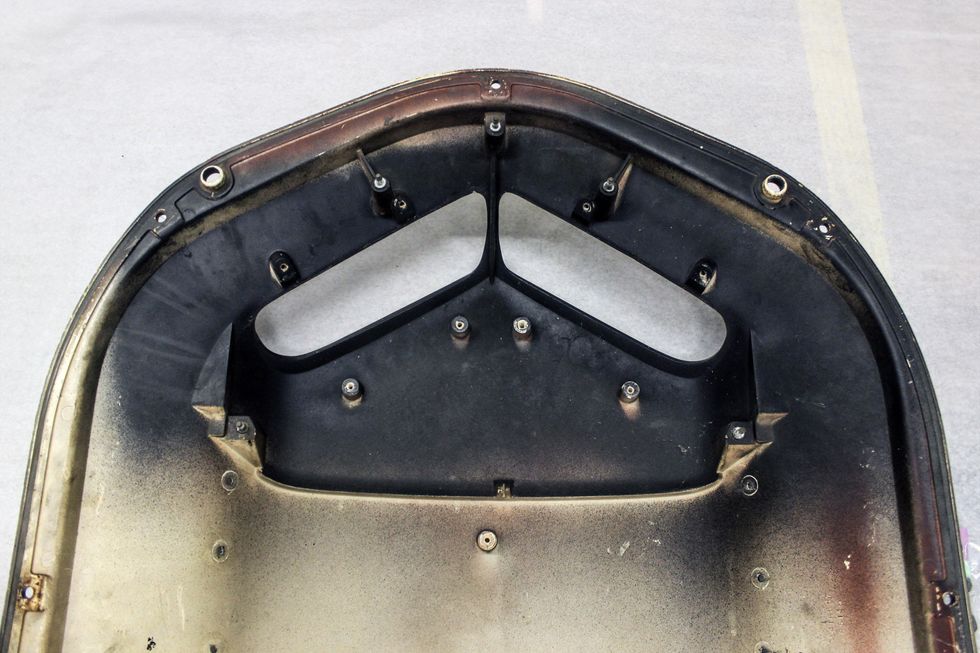

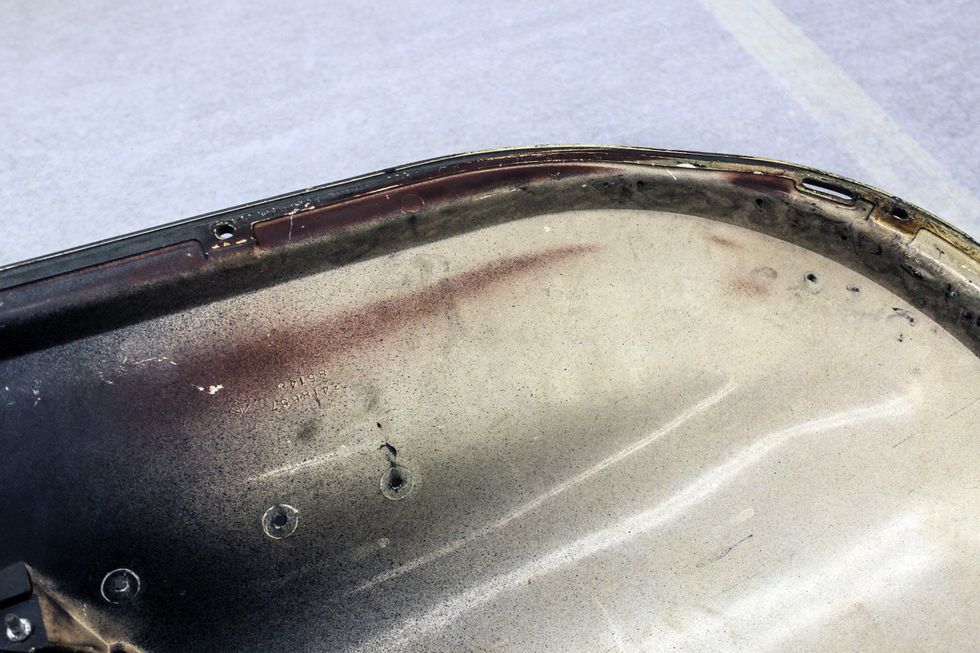

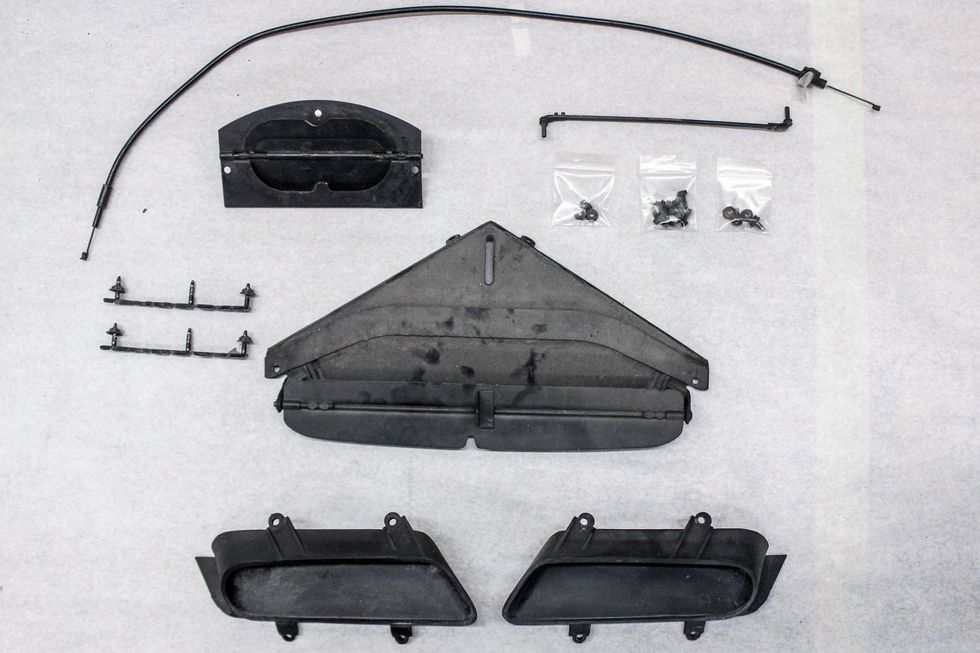
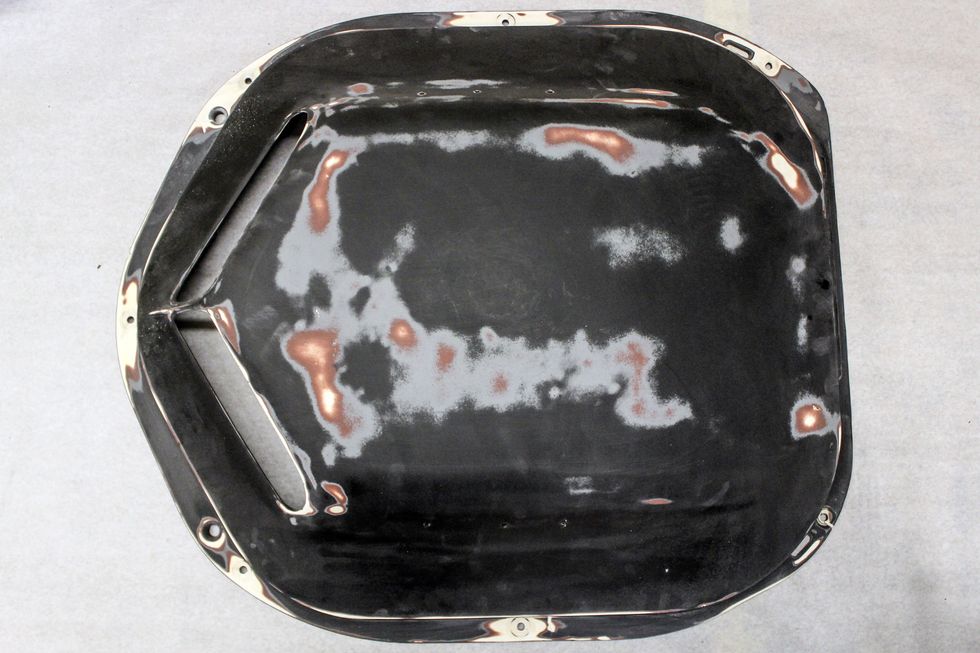

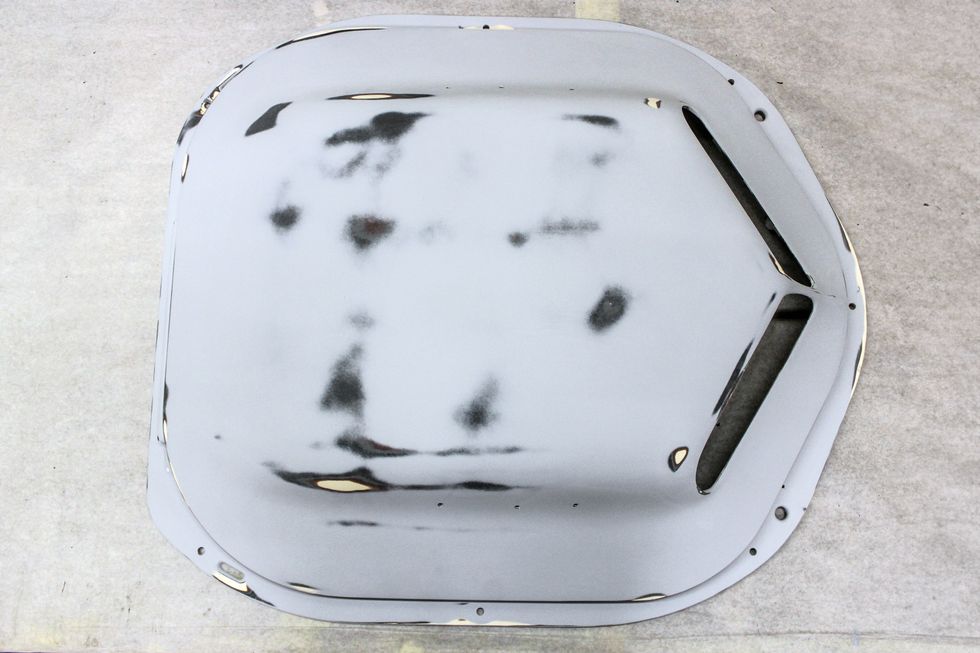
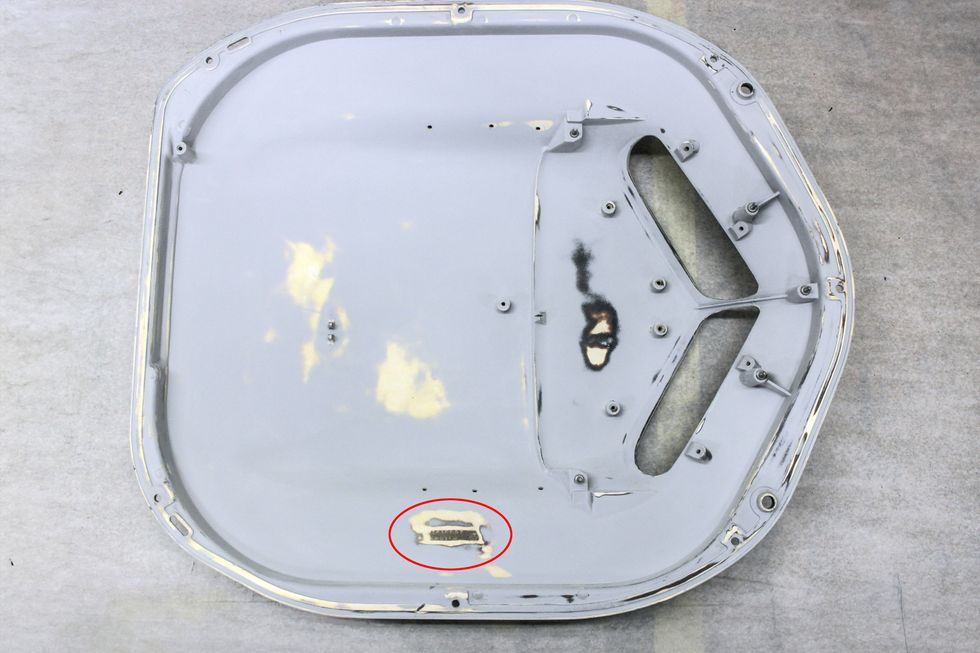



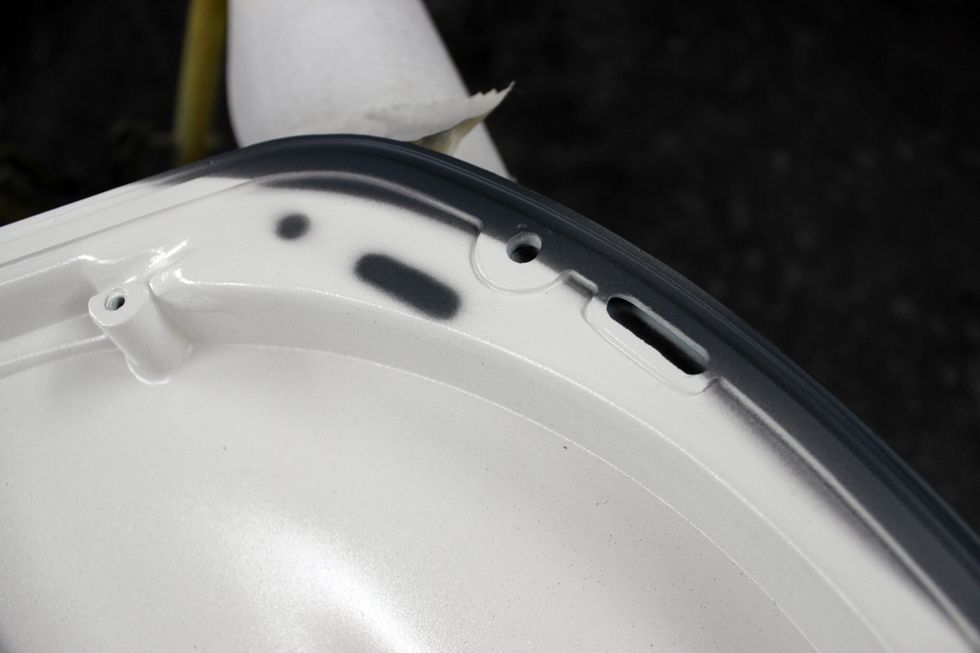




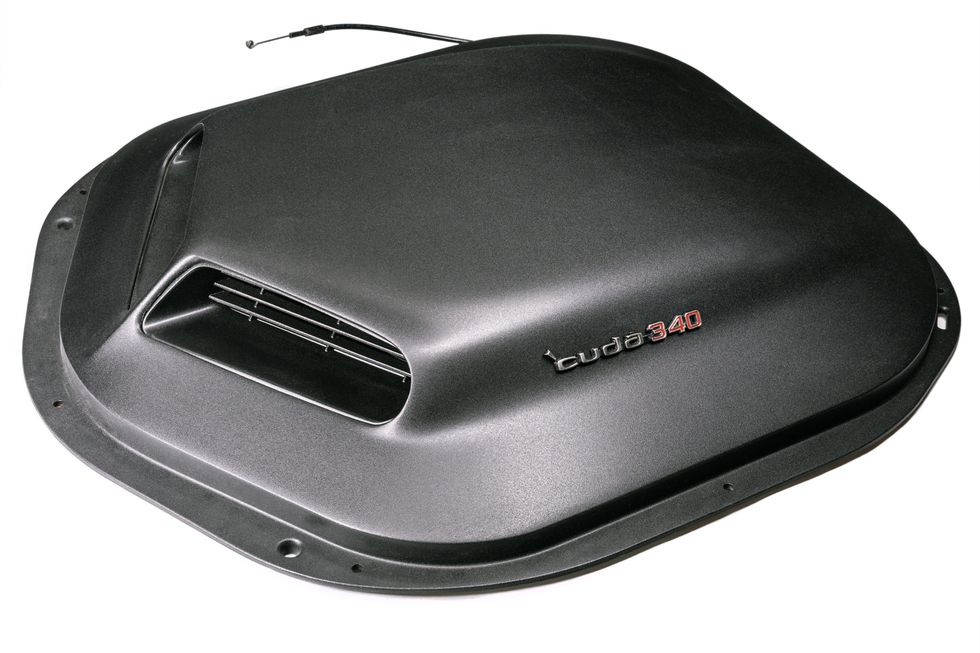
Photo: John Machaqueiro
The finished assembly brings this Shaker bubble back to its original look as it rolled out of the Hamtramck assembly plant. Worth pointing out on these assemblies are the emblems. While they look identical to what would have come on the standard Rallye hood, they are in fact different. Shaker bubble emblems used a longer three pin emblem that is retained using speed nuts, while the emblems used on the Rallye hood were a shorter two-pin design that used plastic expansion sleeves to hold them in place.
Using generational reference points, if you fall between the later "Gen X" and the early "Millennial" generations, a 1980s Oldsmobile Cutlass Supreme is likely to be involved in your history at some point. For many, this was the hand-me-down car from Mom and Dad or the from the grandparents as they moved on to Chevrolet Tahoes, Ford Explorers, Northstar-powered Cadillacs or whatever else that was catching their attention. For others, this was an easy-to-find used car bargain that was most likely to be reliable and comfortable, with a bit of a kick under the hood and a bit of class for the outside world. For a long time, a Cutlass Supreme was a common sight on the roads, even as front-wheel-drive V-6 powered sedans became the normal for families, because a great new car made for a great used car.
Mechanically, what wasn’t to like? The Cutlass nameplate had been one GM’s best-selling for years at that point, and the G-body platform was a robust rear-drive body-on-frame design that offered everything from safe-and-sane V6 offerings to the Oldsmobile 307 V-8. Automatic transmissions meant an easier learning curve for young drivers, and young and older both could agree that the two-door body was both sporty-looking with just the right touches of Oldsmobile formality. Similarly, there weren’t any complaints about a Cutlass’s interior appointments. It was an easy sell for both ends of the argument.
This 1986 Cutlass Supreme Brougham currently available on Hemmings' Marketplace is a great visualization of what you could expect to see in high school parking lots through the mid-to-late 1990s. There’s minor wear, like some cracking paint and the faded “Cutlass” branding on the mud flaps, but it still presents beautifully. There’s a set of custom wheels attached (a tasteful set of Cragar S/S wheels, in this case) and that’s about it, because car parts are expensive for a high school junior’s budget. The suspension will still be Oldsmobile-level soft and cushy; the exhaust will just be a low, mellow tone that came with the car from factory (because Dad warned you about cutting off the muffler to make it louder) and the sound system was still stock (again, because stereo equipment wasn't cheap). The parents were happy because it started every time, the fuel economy was tolerable and there was a good chance that you would walk away from a crash in something with a frame underneath it. You were happy because it had a V-8, only had two doors, wasn't the size of Aunt Judy's Delta 88, and could spin a tire if you hit the throttle hard enough.
With twenty years having passed since the end of grunge rock and the dawn of the Internet age, how many readers immediately think back to the Cutlass of their past? Your author has had owned four of them, plus the cars of friends, of co-workers, or the cars that he looked at as possible projects throughout the years. With values still very approachable and plenty of support in the aftermarket, there is no reason you can’t turn the clock back every time you twist the key.